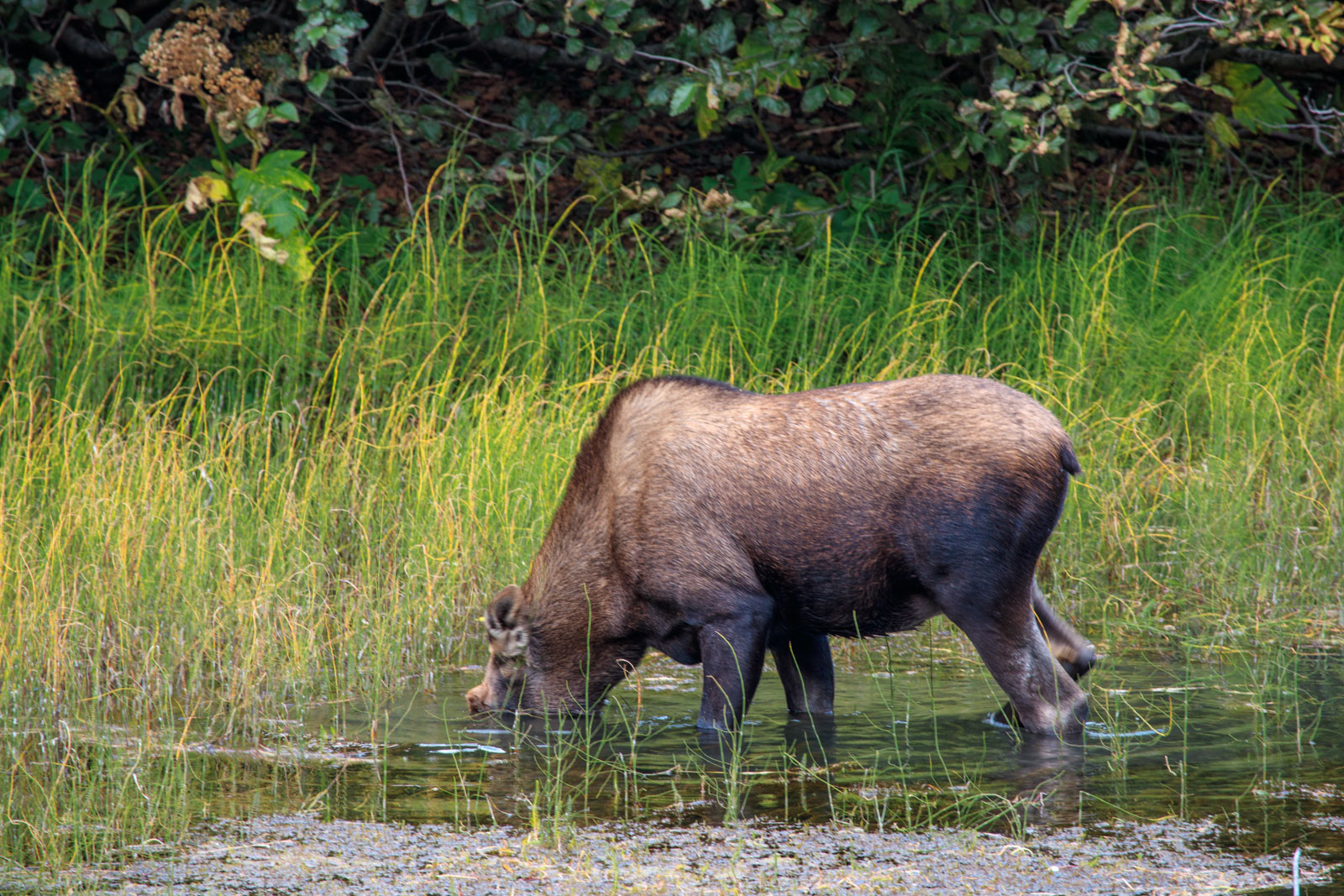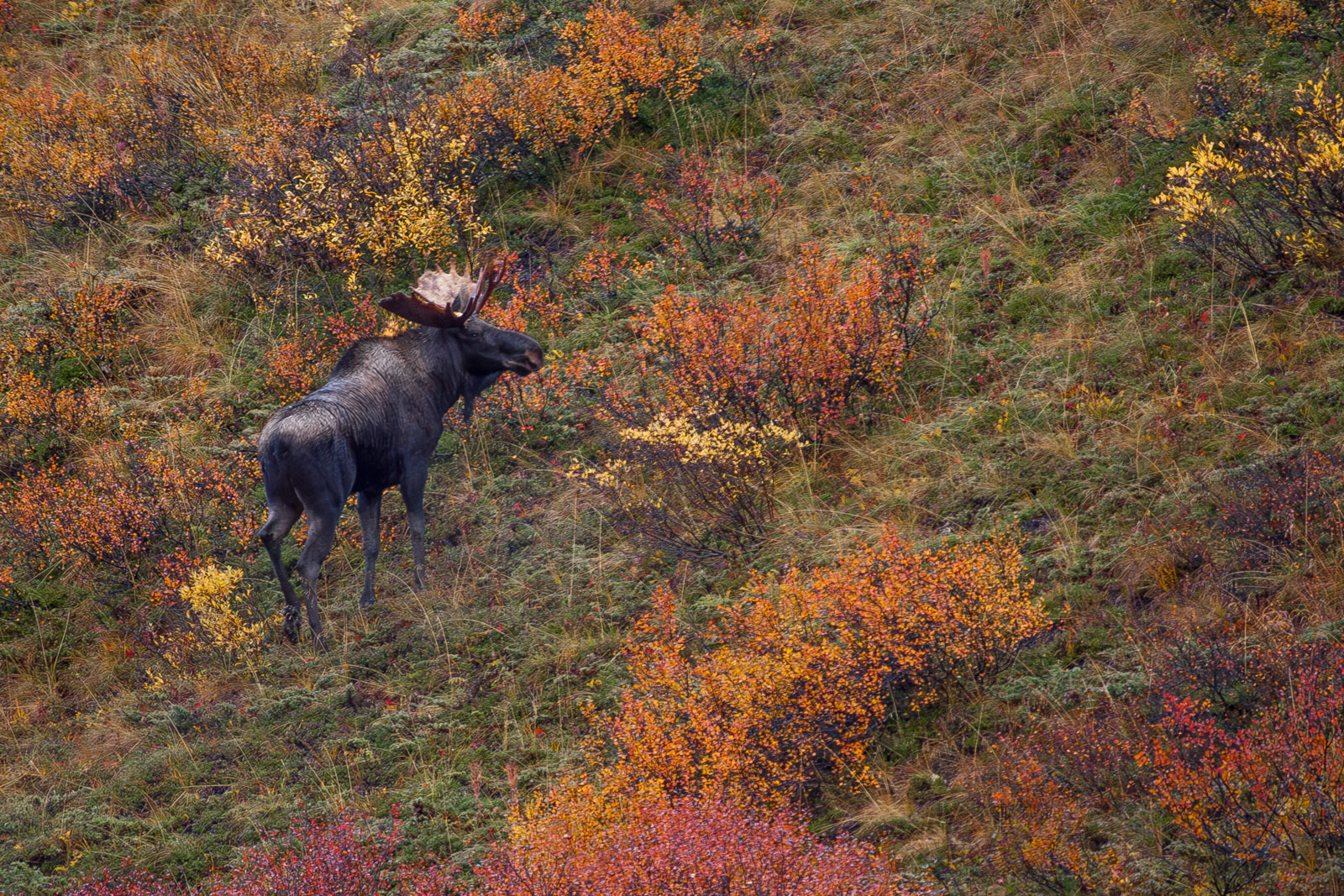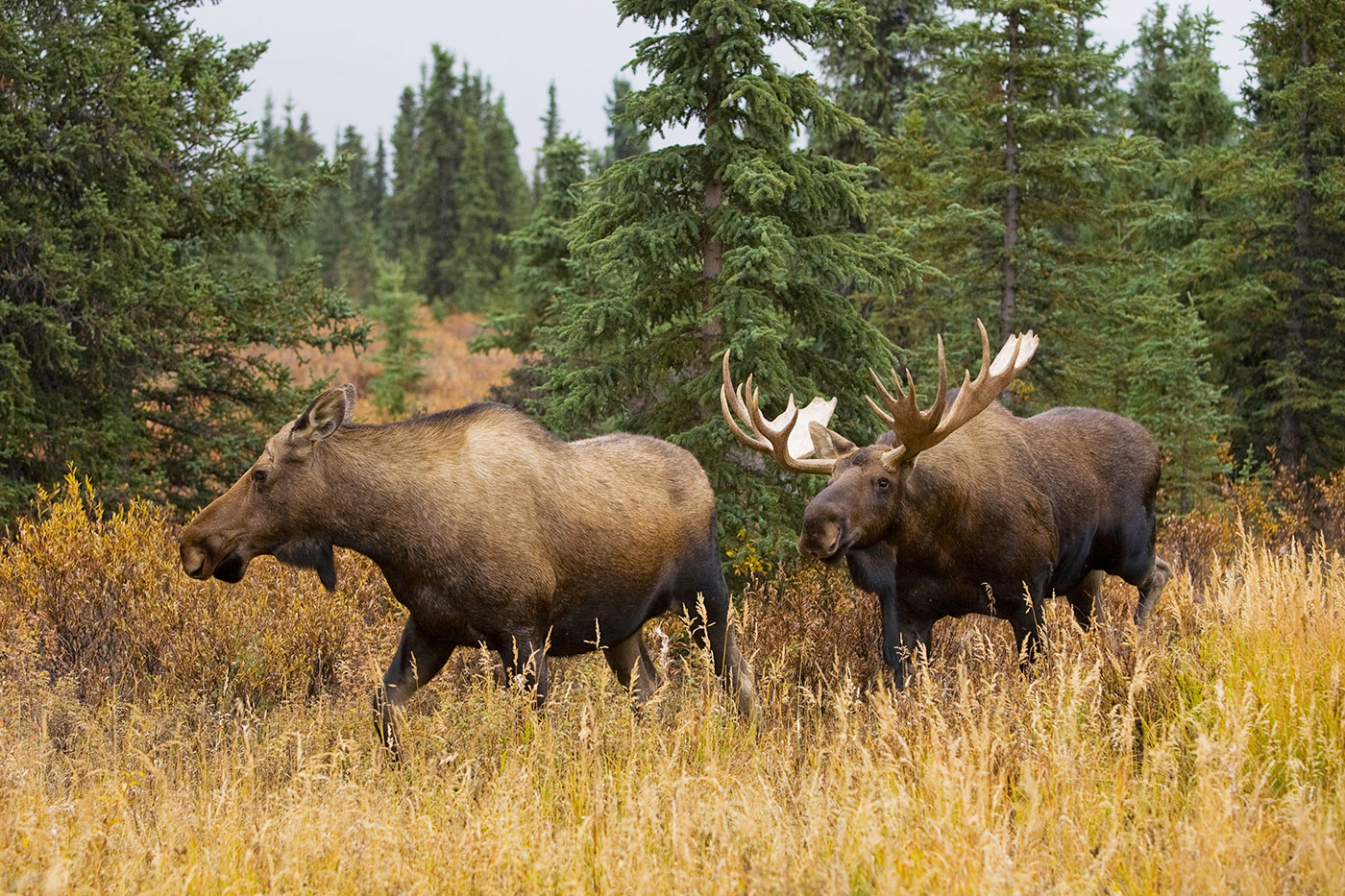Introduction to the Moose (Alces alces)
The moose (Alces alces) is the largest member of the deer family, and the subspecies found in Alaska and Yukon (Alces alces gigas) is the biggest moose in the world. Known as “elk” in Europe, moose are native to northern forests across North America, Europe, and Russia. In Alaska, they live in a wide range of environments—from Southeast Alaska’s Unuk River to the Arctic Slope’s Colville River.
Where Moose Live in Alaska
Moose prefer areas where food is abundant, especially:- Recently burned forests with dense young willows, aspens, and birches
- Timberline plateaus
- River corridors in Southcentral and Interior Alaska
- These environments offer rich vegetation and shelter, making them ideal moose habitats.
Moose Appearance and Size
Moose are recognizable by their:- Long legs
- Large, heavy bodies
- Humped shoulders
- Drooping nose
- Chin flap called a “bell” or dewlap
- Their fur color ranges from golden brown to dark black, depending on the season and age. Calves are born with reddish coats that lighten by the end of summer.
Adult bulls (males): 1,200 to 1,600 pounds (540–725 kg)
Adult cows (females): 800 to 1,300 pounds (365–590 kg)
Moose Antlers and Growth
Only male moose grow antlers, which are shed each winter and regrown in spring and summer. Some antlers in Alaska span over 50 inches (127 cm). Bulls usually reach trophy size around 10 to 12 years of age.
Moose Behavior and Communication
Moose communicate through:- Vocal calls
- Body language
- Scent markings
- They typically live up to 16 years in the wild.
Moose Reproduction and Calves
Mating Season (Rut) Moose breed in late September to early October. Bulls compete by locking antlers and pushing each other, although serious injuries are rare.Calving
Calves are born in mid-May to early June
Gestation lasts around 230 days
Newborn calves weigh 28–45 pounds (13–20 kg)
Calves begin feeding on solid food just days after birth and can grow to over 500 pounds by fall. They stay with their mother until around one year old.
What Moose Eat: Diet by Season
Moose are herbivores that browse and graze throughout the year: Fall and Winter Willow, birch, and aspen twigsOften clip terminal branches, creating “browse lines”
Spring and Summer Grasses, sedges, and pond vegetation (e.g., horsetail and pondweed)
Fresh leaves from birch, aspen, and willow
Seasonal Movements and Migration
Moose travel between:
- Calving areas
- Breeding grounds
- Wintering ranges
- They may move a few miles or up to 60 miles depending on habitat quality and seasonal needs.
Natural Predators of Moose
Moose populations are naturally controlled by:- Wolves: active year-round
- Black bears: prey on calves in spring
- Brown bears: take both calves and adults from spring to fall
- Predation, harsh winters, and deep snow can reduce moose survival rates, especially for calves.
Human Impact and Moose Conservation in Alaska
Historically, moose have provided food, tools, and clothing to Alaska Native communities. Today, they are a major target for subsistence and sport hunters, with 6,000–8,000 moose harvested annually, yielding millions of pounds of meat.Moose and Urban Areas
Moose frequently come into contact with people by:
- Eating crops and landscaping
- Wandering into cities and airports
- Causing car and train collisions
Logging and wildfires—when managed carefully—can benefit moose populations by creating areas of new plant growth. However, increasing urban development makes moose management more challenging. Wildlife agencies must now balance:
- Hunting interests
- Conservation goals
- Public safety
- Tourism and education


